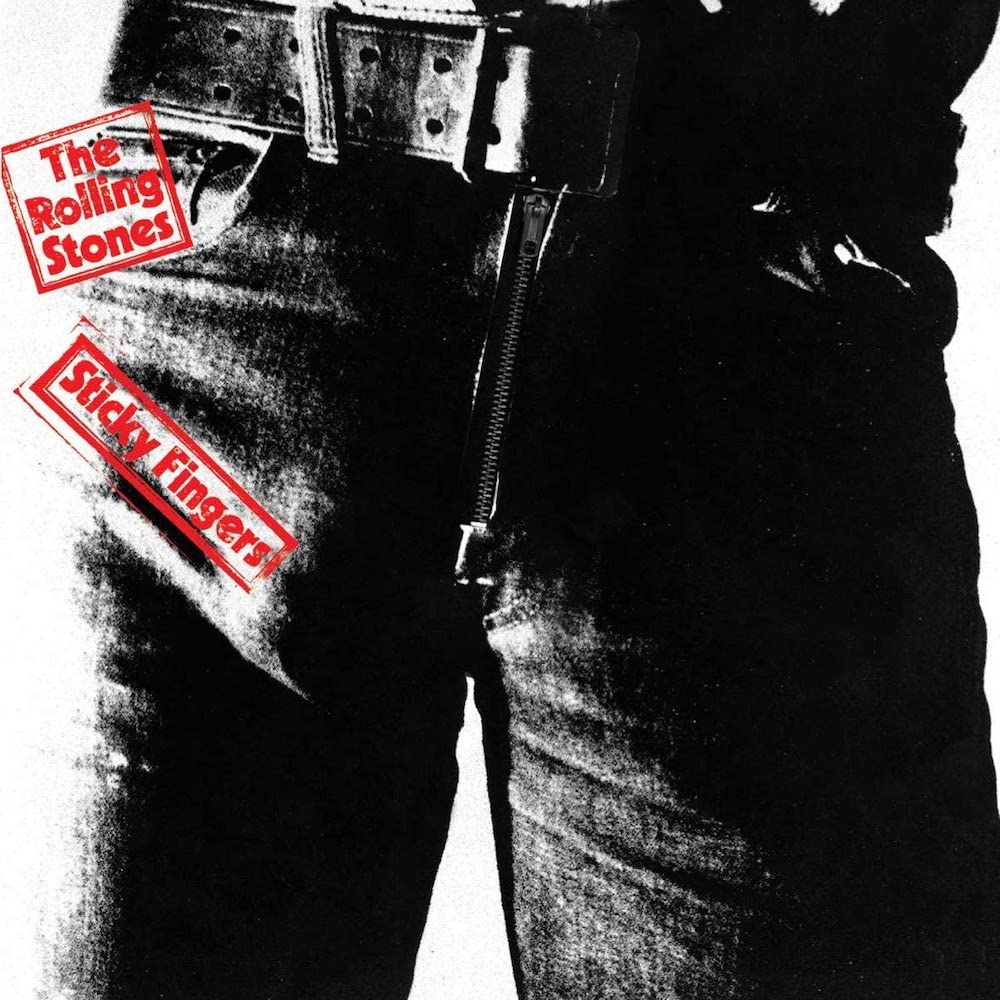
If this isn’t the Stones’ best, it’s right up there with whatever is.
If the track Love In Vain had been on this record instead of on Let It Bleed (it could have replaced Moonlight Mile, perhaps), this LP would have been an absolutely perfect offering.
The treatment Mobile Fidelity (MF) gives this record is OK, although for some reason they really upped the bass, which to my ears is too much of a gut-smack. I’ve got another pressing, a 1997 European reissue, that sounds better, so this moderately rare gem is getting the boot. I don’t need two copies of anything.
But even the MoFi is a great listen! I just prefer the newer mix, which seems more natural. Opening with Brown Sugar, the needle then slips into Sway and Wild Horses before continuing into the mind-blowing Can’t You Hear Me Knocking? - a rock classic in the vein of The Who’s Won’t Get Fooled Again - and then finishes with You Gotta Move, in case by then you’d forgotten that the Stones are all about blues at their core.
Flip it over onto side two and the greatness starts all over again. Bitch is a great rock song, one of the very best. Gene Simmons, of Kiss fame, has claimed the song Deuce, on Kiss' first album, is a based on Bitch.
I Got The Blues, a terrific and gritty slow-moving blues, is also here, as is Dead Flowers - a great rocker that would get an acoustic makeover courtesy of Townes Van Zandt that would be featured in the movie, The Big Lebowski. Sister Morphine is on this record, too, but that's a tune I never really got into.
When this record came out the Spanish authorities thought the zipper cover was too offensive, with the result being that the Stones changed the cover art on the first pressing of the LP in that country to a can of oil with a bunch of severed fingers sticking out of it. Much more civilized! I had that pressing too, but I’ve already traded it.
You can't talk about this record without someone mentioning the now-iconic cover. The initial release featured a real zipper on the cover, and when you pulled it down you were presented with a close up photo of a male model wearing white underwear.
Everyone seemed to assume the model was Mick Jagger, but the true identity of the well-endowed model has been a mystery for more than 40 years. It all began when Warhol photographed several men from the waist down, and after the photo shoots he never told anyone the identity of the man on the cover. But it's definitely not Jagger, and Glenn O'Brien, who was the editor of Warhol's Interview magazine, says he is "100 percent certain” it's him. “I knew it was me because it was my underwear!” he told The New York Post in a 2015 interview. “Warhol just said it was for a Rolling Stones album cover. I was a huge fan, so I was pleased, and also I got paid $100. Not bad for 20 minutes’ work.” The shoot took place at 33 Union Square West, which housed Interview’s offices and Warhol’s Factory.
“There was an architect’s office next door,” O’Brien recalls. “I have my jeans down around my ankles. Andy is kneeling in front of me with his Polaroid, and Fred Hughes (Warhol’s business manager) is making rude remarks, like, ‘Can’t you make it any bigger?’ The door opens, and these guys walk in in suits, and they’re dumbfounded. And one of them said, ‘Um, this isn’t the architect’s office?’”
Although Warhol never told anyone the identity of the cover model, O’Brien believes it was Corey Tippin, a makeup artist who was part of the Warhol scene at the time. Tippin didn’t know what the shoot was for and says he received $75. He recalls that "Andy wanted a bulgy crotch. To me it had nothing to do with rock n’ roll. Those of us in the gay world related to it as a gay iconic image.”
Like O'Brien, Tippin was never told the identity of the jeans model on the cover but is convinced it’s him. “I know my anatomy,” he says.
The sound of the European pressing is very good. The Stones always sounded a bit rough around the edges, but the songs would be lacking something without that. The trick is to catch the sound properly, and in this case that means clean and lean. Boosting the lower end, like Mobile Fidelity seems to have done, was not the right decision for this music, and it sounds so much better stripped back and raw. Then again, trying to find the best "audiophile" copy of a Stones record is a bit of a fool's errand. That was never the intention going into the recording studio. But this pressing, beyond any doubt whatsoever, is …
If this isn’t the Stones’ best, it’s right up there with whatever is.
If the track Love In Vain had been on this record instead of on Let It Bleed (it could have replaced Moonlight Mile, perhaps), this LP would have been an absolutely perfect offering.
The treatment Mobile Fidelity (MF) gives this record is OK, although for some reason they really upped the bass, which to my ears is too much of a gut-smack. I’ve got another pressing, a 1997 European reissue, that sounds better, so this moderately rare gem is getting the boot. I don’t need two copies of anything.
But even the MoFi is a great listen! I just prefer the newer mix, which seems more natural. Opening with Brown Sugar, the needle then slips into Sway and Wild Horses before continuing into the mind-blowing Can’t You Hear Me Knocking? - a rock classic in the vein of The Who’s Won’t Get Fooled Again - and then finishes with You Gotta Move, in case by then you’d forgotten that the Stones are all about blues at their core.
Flip it over onto side two and the greatness starts all over again. Bitch is a great rock song, one of the very best. Gene Simmons, of Kiss fame, has claimed the song Deuce, on Kiss' first album, is a based on Bitch.
I Got The Blues, a terrific and gritty slow-moving blues, is also here, as is Dead Flowers - a great rocker that would get an acoustic makeover courtesy of Townes Van Zandt that would be featured in the movie, The Big Lebowski. Sister Morphine is on this record, too, but that's a tune I never really got into.
When this record came out the Spanish authorities thought the zipper cover was too offensive, with the result being that the Stones changed the cover art on the first pressing of the LP in that country to a can of oil with a bunch of severed fingers sticking out of it. Much more civilized! I had that pressing too, but I’ve already traded it.
You can't talk about this record without someone mentioning the now-iconic cover. The initial release featured a real zipper on the cover, and when you pulled it down you were presented with a close up photo of a male model wearing white underwear.
Everyone seemed to assume the model was Mick Jagger, but the true identity of the well-endowed model has been a mystery for more than 40 years. It all began when Warhol photographed several men from the waist down, and after the photo shoots he never told anyone the identity of the man on the cover. But it's definitely not Jagger, and Glenn O'Brien, who was the editor of Warhol's Interview magazine, says he is "100 percent certain” it's him. “I knew it was me because it was my underwear!” he told The New York Post in a 2015 interview. “Warhol just said it was for a Rolling Stones album cover. I was a huge fan, so I was pleased, and also I got paid $100. Not bad for 20 minutes’ work.” The shoot took place at 33 Union Square West, which housed Interview’s offices and Warhol’s Factory.
“There was an architect’s office next door,” O’Brien recalls. “I have my jeans down around my ankles. Andy is kneeling in front of me with his Polaroid, and Fred Hughes (Warhol’s business manager) is making rude remarks, like, ‘Can’t you make it any bigger?’ The door opens, and these guys walk in in suits, and they’re dumbfounded. And one of them said, ‘Um, this isn’t the architect’s office?’”
Although Warhol never told anyone the identity of the cover model, O’Brien believes it was Corey Tippin, a makeup artist who was part of the Warhol scene at the time. Tippin didn’t know what the shoot was for and says he received $75. He recalls that "Andy wanted a bulgy crotch. To me it had nothing to do with rock n’ roll. Those of us in the gay world related to it as a gay iconic image.”
Like O'Brien, Tippin was never told the identity of the jeans model on the cover but is convinced it’s him. “I know my anatomy,” he says.
The sound of the European pressing is very good. The Stones always sounded a bit rough around the edges, but the songs would be lacking something without that. The trick is to catch the sound properly, and in this case that means clean and lean. Boosting the lower end, like Mobile Fidelity seems to have done, was not the right decision for this music, and it sounds so much better stripped back and raw. Then again, trying to find the best "audiophile" copy of a Stones record is a bit of a fool's errand. That was never the intention going into the recording studio. But this pressing, beyond any doubt whatsoever, is …



